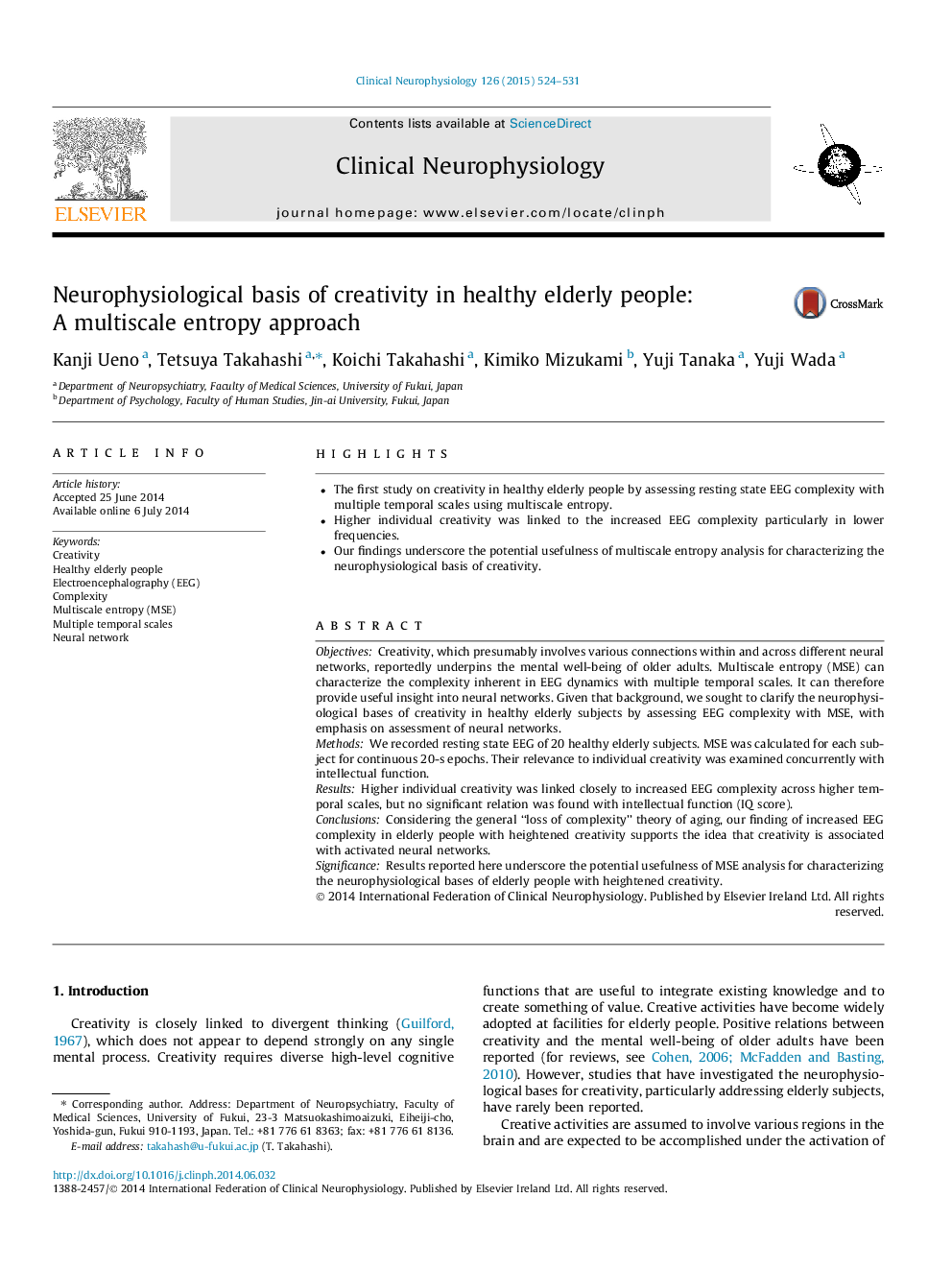| Article ID | Journal | Published Year | Pages | File Type |
|---|---|---|---|---|
| 3043712 | Clinical Neurophysiology | 2015 | 8 Pages |
•The first study on creativity in healthy elderly people by assessing resting state EEG complexity with multiple temporal scales using multiscale entropy.•Higher individual creativity was linked to the increased EEG complexity particularly in lower frequencies.•Our findings underscore the potential usefulness of multiscale entropy analysis for characterizing the neurophysiological basis of creativity.
ObjectivesCreativity, which presumably involves various connections within and across different neural networks, reportedly underpins the mental well-being of older adults. Multiscale entropy (MSE) can characterize the complexity inherent in EEG dynamics with multiple temporal scales. It can therefore provide useful insight into neural networks. Given that background, we sought to clarify the neurophysiological bases of creativity in healthy elderly subjects by assessing EEG complexity with MSE, with emphasis on assessment of neural networks.MethodsWe recorded resting state EEG of 20 healthy elderly subjects. MSE was calculated for each subject for continuous 20-s epochs. Their relevance to individual creativity was examined concurrently with intellectual function.ResultsHigher individual creativity was linked closely to increased EEG complexity across higher temporal scales, but no significant relation was found with intellectual function (IQ score).ConclusionsConsidering the general “loss of complexity” theory of aging, our finding of increased EEG complexity in elderly people with heightened creativity supports the idea that creativity is associated with activated neural networks.SignificanceResults reported here underscore the potential usefulness of MSE analysis for characterizing the neurophysiological bases of elderly people with heightened creativity.
